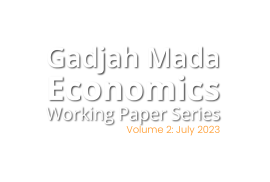Abstract
Assessment of determinants of risky behaviors, such as smoking, vaping, alcohol consumption, and drug abuse, is critically important to be conducted. Nonetheless, previous studies only looked at the role of socioeconomic factors and their relationship to risky behaviors in young people, but did not consider the lifestyle. To address this issue, we utilized microdata from the Narcotics Board of Indonesia (BNN), namely the Indonesia Urban Lifestyle Community Survey 2018, to determine which characteristics, in terms of lifestyle and socioeconomic factors, are related to the conduct of smoking, vaping, alcohol consumption, and drug abuse among young adolescents in Indonesia. Using the logistic regression method, we discovered that risky behaviors are a vicious circle. Peer effect has been linked to a higher likelihood of engaging in risky behaviors as well as nightclub visits. Gender, education, and parental education were all significant socioeconomic factors for some behaviors. This result implies that the effort to alleviate the prevalence of risky behaviors must be integrated and comprehensive.

